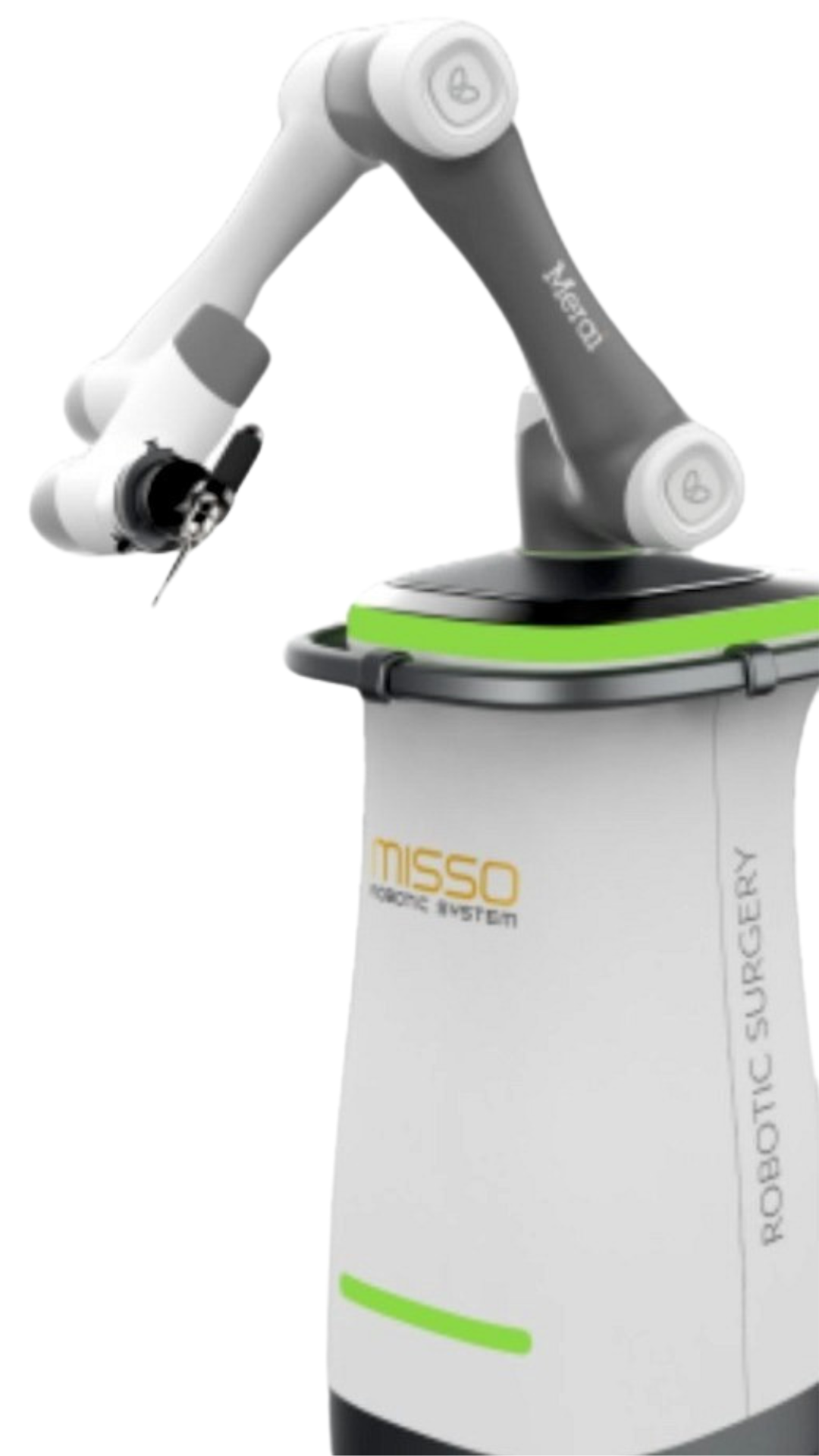Robotic Knee Replacement Surgery

If you’re looking for the leading robotic joint replacement surgeon in Pune, Dr. Akshay Phadke is an excellent choice. He specializes in robotic joint replacement surgeries using the advanced CUVIS Joint technology, representing the next generation of robotics in this field.
During the Robotic Total Knee Replacement procedure, Dr. Phadke employs cutting-edge robotics to ensure precise bone cuts and optimal soft tissue tension. This innovative approach often results in better post-surgical outcomes compared to traditional manual techniques.
A typical robotic knee replacement procedure with the CUVIS Joint includes:
- In-clinic diagnosis
- Pre-surgery planning (virtual simulation)
- Hospital discharge
- CT scan
- Autonomous robotic surgical procedure
For top-tier robotic joint replacement in India, Dr. Akshay Phadke is your go-to expert.
The CUVIS Joint robot for knee replacement is built on four core values: simplicity, accuracy, flexibility, and safety.
Simplicity
- Quick and easy generation of 3D bone models using CT image data.
- Streamlined surgery preparation with an intuitive user interface.
Accuracy
- Consistent execution of precise pre-surgical planning.
- Achieves sub-millimeter dimensional accuracy.
Flexibility
- Offers various cutting options.
- Allows for intra-operative adjustments and gap balancing.
Safety
- Monitors the system in real time for enhanced safety.
- Features an emergency stop and force freeze option, along with manual control of the robot arm.
For advanced robotic knee replacement solutions, Dr. Akshay Phadke ensures these values are upheld throughout the surgical process.
The procedure for Total Knee Replacement (TKR) has evolved significantly due to advancements in materials and a deeper understanding of knee joint biomechanics. Achieving accurate alignment of components and proper soft tissue balancing is crucial for the success of TKR.
Conventional Knee Replacement
In traditional knee replacement, metal blocks and intramedullary rods are used for bone cutting and measurement. While mechanical alignment guides have been developed to enhance accuracy, they still have limitations, and errors can occur.
Robotic Knee Replacement Surgery
Conventional TKR has its constraints in improving alignment accuracy. In robotic knee replacement, joint axis and bone alignment are established using a CT scan, eliminating the need for intramedullary rods. A patient-specific 3D bone model is created from the CT scan, allowing for precise bony cuts and accurate positioning of implants.
This approach can be likened to practicing surgery on bone models before operating on the patient, effectively minimizing errors associated with traditional techniques. In robotic surgery, bone mapping is performed using sensors and cameras, which also assist in measuring soft tissue tension, thereby enhancing gap balancing. As a result, well-balanced implants contribute to their longevity and allow for greater mobility after total knee replacement.
For advanced and precise knee replacement solutions, Dr. Akshay Phadke is dedicated to providing the best care through robotic surgery techniques.
Advantages of Robotic Knee Replacement
- Optimal Post-Surgery Outcomes: Achieves the best results following surgery.
- Personalized Approach: Tailored pre-surgery planning specific to each patient.
- Enhanced Surgical Accuracy: Ensures maximum precision during the procedure.
- Minimally Invasive: Results in less blood loss and reduced pain.
- Faster Recovery: Shorter hospital stays and quicker recovery times.
- Small Incision: Utilizes minimal incisions for the procedure.
- Reduced Surgical Time: Keeps the duration of surgery to a minimum.
- Effective Pain Management: Local infiltration of medication is administered during surgery to control pain.
- Reduced Medication Use: Minimal drugs are required post-surgery.
- Early Mobility: Patients can often walk within hours of the procedure.
- Lower Blood Loss: Reduces stress on the patient’s body and minimizes blood loss.
AFTER SURGERY
You will be assisted to sit up about an hour after surgery. You will be encouraged to walk 3-4 hours after surgery. You will be assisted to stand and start walking with walker on same day of surgery. This is all possible with use of true balance technique and local infiltration of anaesthetic agent at time of surgery.
DAY 3 & 4 :
Knee bending exercises will be increased. During the day you will be walking 3-4 times with walker. Once you gain confidence you will be demonstrated how to walk up a staircase. You will be allowed to do the exercise by yourself. You will be allowed to sit on chair.
IMPORTANT ADVICE :
You must not keep pillow or towel under the operated knee, this is to prevent flexion deformity of knee. To prevent knee deformity put one or two pillows under the lower 1/3rd of leg so that knee hangs in mid air and there is no pressure over heel area.
